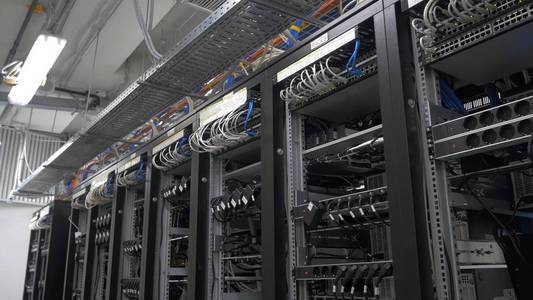Shenzhen, the Silicon Valley of China, pulsates with technological innovation, and within its vibrant ecosystem lies a burgeoning cryptocurrency mining industry. Choosing the right mining machine in this competitive landscape is akin to navigating a labyrinth, demanding a keen understanding of market dynamics, technological specifications, and the intricate dance of profitability. Let’s embark on a journey to unravel the complexities and equip you with the knowledge to select a mining machine that maximizes your returns.
The cryptocurrency market, notorious for its volatility, presents both immense opportunities and inherent risks. Bitcoin (BTC), the pioneer, still reigns supreme, while Ethereum (ETH), with its smart contract capabilities, fuels the decentralized finance (DeFi) revolution. Dogecoin (DOG), born from internet memes, showcases the power of community-driven digital assets. Understanding these nuances is crucial; different algorithms and network complexities necessitate specialized mining hardware. An ASIC miner designed for Bitcoin’s SHA-256 algorithm will be utterly ineffective for mining Ethereum, which historically relied on Ethash (now transitioning towards Proof-of-Stake). Furthermore, staying abreast of regulatory changes and market sentiment is paramount to making informed decisions.
Before diving into the specifics of mining machines, let’s address the significance of mining pools and hosting options. Mining pools aggregate the computational power of numerous miners, increasing the likelihood of successfully mining a block and receiving rewards. Joining a reputable pool offers a more consistent stream of income compared to solo mining, where success hinges entirely on individual hash rate. Alternatively, consider the advantages of hosting your mining machines in a dedicated mining farm. These facilities provide optimized environments with efficient cooling systems, stable power supplies, and robust security measures, alleviating the burden of managing infrastructure and potentially lowering operational costs.
The heart of your mining operation lies in the mining machine itself. Factors such as hash rate (the speed at which the machine can solve cryptographic problems), power consumption, and price tag are pivotal considerations. A higher hash rate translates to a greater chance of earning rewards, but it often comes at the expense of increased power consumption. Therefore, calculating the hash rate per watt (a measure of energy efficiency) is crucial for assessing long-term profitability. Consider the initial investment cost amortized over the lifespan of the machine, factored against electricity costs and potential cryptocurrency rewards. Reputable manufacturers like Bitmain, Canaan, and MicroBT offer a range of machines catering to different budgets and performance requirements. Due diligence is crucial; research reviews, compare specifications, and verify the authenticity of suppliers to avoid counterfeit or unreliable equipment.
Beyond the technical specifications, consider the support and warranty offered by the manufacturer or supplier. A reliable warranty provides peace of mind, protecting your investment against potential hardware failures. Access to responsive technical support is invaluable for troubleshooting issues and ensuring optimal performance. The burgeoning cryptocurrency mining community in Shenzhen offers a wealth of knowledge and resources. Connecting with local experts, attending industry events, and joining online forums can provide valuable insights and guidance.

Securing your cryptocurrency holdings is paramount. Utilize hardware wallets, cold storage solutions, and robust password management practices to safeguard your digital assets against theft or hacking. Diversify your cryptocurrency portfolio and avoid investing more than you can afford to lose. The cryptocurrency market is inherently volatile, and past performance is not indicative of future results. By approaching cryptocurrency mining with a well-informed strategy, a calculated risk appetite, and a commitment to ongoing learning, you can navigate the dynamic landscape of Shenzhen’s mining industry and maximize your potential for profitability.
Mining rigs, often composed of multiple GPUs or dedicated ASICs, require a stable and reliable power supply. Power outages or fluctuations can damage sensitive hardware and disrupt mining operations. Invest in a high-quality power supply unit (PSU) with sufficient wattage to handle the demands of your mining rig. Consider purchasing an uninterruptible power supply (UPS) to provide backup power in the event of an outage. Cooling is equally crucial; overheating can significantly reduce performance and shorten the lifespan of your mining machines. Implement effective cooling solutions, such as immersion cooling or efficient ventilation systems, to maintain optimal operating temperatures.

In conclusion, choosing the best mining machine in Shenzhen requires a multifaceted approach. By understanding the nuances of cryptocurrency markets, meticulously evaluating hardware specifications, and carefully considering hosting options and security measures, you can position yourself for success in this dynamic and potentially lucrative industry. Remember, continuous learning and adaptation are essential for navigating the ever-evolving landscape of cryptocurrency mining.




One response to “How to Choose the Best Mining Machine in Shenzhen for Maximum Profitability”
在深圳挑选采矿机?这指南巧妙融合效率、市场波动和本地供应商,但忽略能源法规风险—一个出人意料的盈利杀手,让我迫不及待想测试这些策略!(28字)